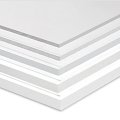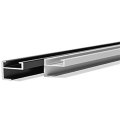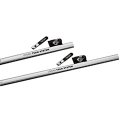Passepartouts and Museum Mounting Board
Passepartout & museum board information
Acid in paper
Paper that is made exclusively from pulp has a very special attribute: it is very absorbent. This is, of course, very desirable in the cases of toilet or blotting papers but in other applications it can cause certain problems. For example, when writing or printing on such “thirsty” paper, inks and dyes will tend to run all over the place. It didn´t take very long before paper makers came up with the idea to size the paper: they treated the paper surface with a size (paste) produced from animal bones. In the middle of the 19th century they took to mixing resin size into the fibre pulp mass and so it was that the so-called vegetable internal (pulp) sizing came into being.
This type of sizing, however, causes other problems which are only now becoming known. The vegetable size reacts with humidity to produce sulphuric acid which attacks the cellulose fibres and causes the paper to fall apart. Such a prospect is very worrisome when considering the myriad number of books in libraries all around the world. It has been estimated that about one quarter of the inventory of books is under threat. It was only in the 1950´s that there was increased use of synthetic substitutes in place of the vegetable size. Problems of aging are no longer a concern with this new type of neutral sized paper.
This, however, is only true if the paper is what is called “wood free” which actually means lignin free: when exposed to light, lignin will break up into acidic components so that in the long term the paper will disintegrate. This means that paper which will be constantly exposed to light must be absolutely wood free.
Many types of paper do not just become acidic with the passage of time but are already acidic when manufactured. In addition to their low resistance to aging, these papers harbour another danger: they will corrode any materials with which they come into contact. Silver or any other metals that are vulnerable to acid should not be packed in paper containing acid because their surfaces with be damaged.
This problem is much graver in the case of photographs and highly valued art objects. Many of these will react unfavourably to acid. Highly valued photographs and graphics should not come into contact with acidic paper for any length of time. Passepartout and mounting board must be pH neutral; the US standard for neutral paper specifies a pH value of 7.8 (for those of you who have forgotten your basic chemistry: a pH value of 7 means that a substance is neutral, everything under that is acidic).
One way to keep paper neutral for the long term is to buffer it with calcium carbonate – a process often used in museum quality passepartout and mounting boards. We do not, however, recommend the use of buffered paper with silver bromide photographs because the alkaline buffer can affect the photographs negatively. The best way to produce long term acid free paper is to make it with cotton fibres.
Paper types
The outer frame allows a work of art to present itself in all its splendour. Passepartout or museum quality mounting board supply photographs, graphics, prints or paintings with the necessary support and protection. But these materials are not only good for presentation purposes. They can also be used for archiving such objects. For this purpose, it is advisable to use special mounting boards because the use of just any old material can cause lasting damage especially if the material contains acids.
For the many different requirements for presentation and archiving there are an equivalent variety of passepartouts available.
Passepartout made from wood pulp
By far the largest percentage of passepartouts available today are made from wood pulp. Because this pulp contains residues of lignin and other harmful components, calcium carbonate must be added to the pulp mass during the production process in order to satisfy the pH value requirements. Mounting board that is buffered in this way has a pH value of from 7.5 to 8 and is therefore able to neutralize any acids that may arise as a result of lignin decomposition or atmospheric pollution. Wood pulp passepartouts are normally buffered with about 2 – 3 % calcium carbonate but there are also boards with an admixture of up to 10% that can be found in the marketplace. The more chalk – calcium carbonate is nothing other than that – that they contain, the more difficult it is to work with mounting boards: cutting through chalk is much more difficult for the passepartout blade than just cutting through cellulose fibre. And the calcium carbonate harbours yet another disadvantage: bromide silver photographs (a coating that has almost completely fallen out of use) or gelatine coated photographs should not be mounted on buffered boards because the buffering will damage them.
Our premium passepartouts contain about 2 – 3% calcium carbonate and have a pH of about 7.7. During the process of aging, this value will decline but will still remain at a safe level for a long time:
pH when new is 7.7; pH at 20 years is 7.6; pH at 50 years is 7.5; pH at 100 years is 7.3.
We offer these high quality premium passepartouts in a large number of different coloured surfaces as well as cores. The colour of the core is in no way an indication of the acidity of a mounting board – a pure white passepartout can have the same pH value as a dyed one. The back side of the passepartouts are abrasion resistant.





